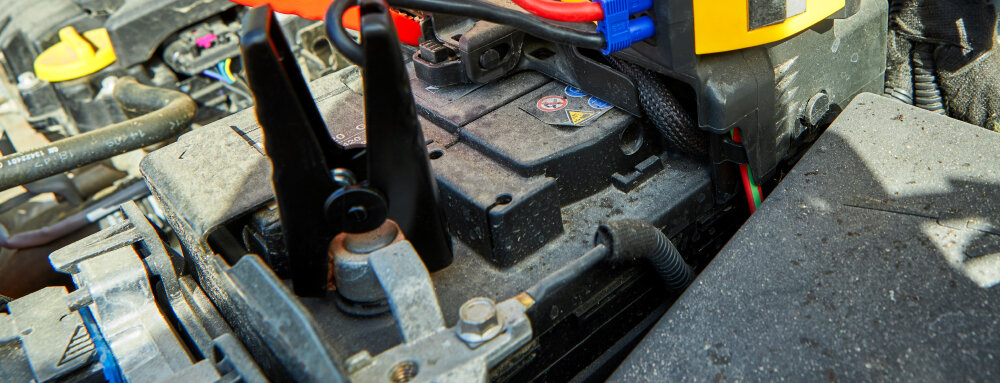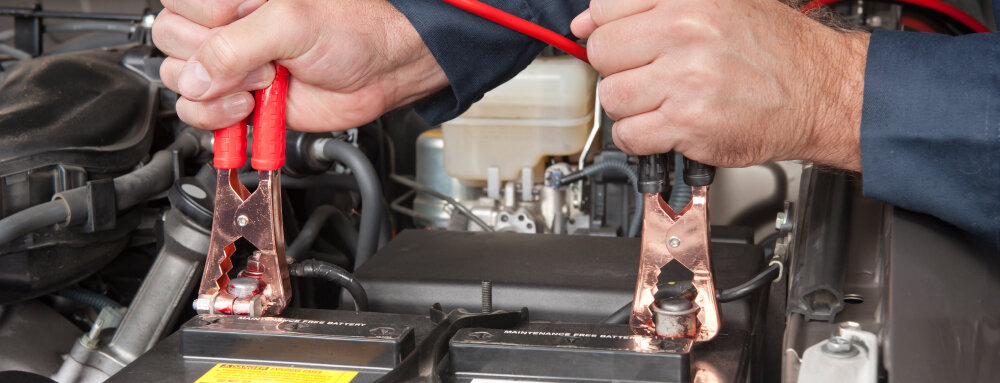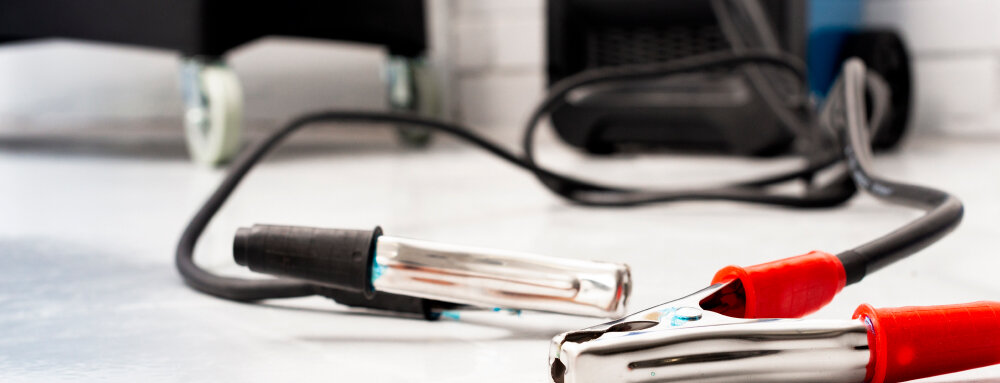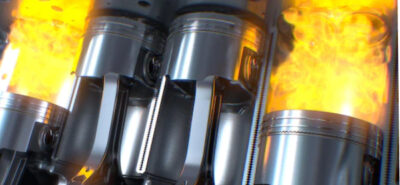Best Guide: Automotive Battery Cables | Red & Black is Negative or Positive?
Red positive black negative? In this article, we will talk about them to answer your questions about automotive battery cables.
Electric wiring is an integral part of a car’s electrical system. It is responsible for transporting electric power to various components throughout the car. Electric wires in the system are color coded for identification. Color coding is a conventional technique to maintain the integrity of the electric system. Electric system in cars consists of car batteries, electric wires, fuses, solenoid relays, and control systems. Electric wires are further segregated in two categories, electric wires and electric cables.

Electric wires are thinner in diameter, used to carry signals to operate different electric components. they are identified by color coding. Wire colors red positive black negative and various wirings with different color codes are used for operating and controlling of electric components.
Electric cables used in cars mostly come in two colors. The red color for the positive cable connects at one end to the battery’s positive terminal and the other to the starter motor. The black wire connects to the car battery’s negative terminal at one end, and the other is grounded. Another positive wire, relatively thinner than main positive, extends to the entire electrical system. It provides power to electric components around the vehicle.
Black wire or ground cable is grounded on the chassis close to the battery and further makes a bridge between the engine and chassis to provide a solid return path for current to complete the circuit. The battery’s positive terminal is bigger in size, sometimes with a “+” sign engraved on or beside the terminal. The negative pole is smaller in size with a “-” mark.
Terminals are made of lead for better connectivity and conductivity. Car batteries provide a high amount of current during the engine crank. The electrical system may suffer if positive and negative wires do not respond correctly to the power requirements. A poor power supply from the battery will affect the efficiency of electric and electronic components.

The red cable is a positive battery terminal +
If you’re connecting the red positive cable to the battery. The vehicle usually has a positive symbol next to the battery terminal. Look for the + sign on top of the battery cover. The red cable is often used to indicate the positive terminal of a battery or power source. This convention is not universal, and there may be cases where other colors are used to indicate the positive terminal, so it’s always important to double-check the documentation or markings on the device you’re working with to confirm which terminal is positive and which is negative.

The black cable is a negative battery terminal –
If you’re connecting the negative cable to the battery. The car’s battery usually has a negative symbol next to the battery terminal. Look for the – sign on top of the battery cover. The black cable is typically the negative or ground cable in automotive electrical systems. The negative cable is connected to the negative battery terminal and provides a return path for electrical current from the vehicle’s electrical system back to the battery. This completes the electrical circuit and allows the battery to restart the car. The negative cable is usually attached to the engine block or another metal component of the vehicle’s chassis. The battery will not recharge correctly without a good ground connection for the electrical system. It’s important to ensure the negative cable is securely fastened to prevent electrical problems.

Car battery, battery terminal, and battery leads
Car battery provides initial power to Starter motor and accessories. The power from the battery is supplied to the electrical system through power cables. These cables are also called hot and cold wires. A car has two main cables, a Positive cable (conventionally red) and a neutral wire or negative cable (Black). Power cables affect the life and health of the battery. If they are appropriately connected, well lubricated with relevant grease, and prevented from corrosion will enhance the battery’s performance and life.

Positive battery Lead.
The positive lead connects the battery’s positive terminal to the starter motor. It spreads all around the car’s electrical system through wiring to power electric components. In most cases, it is red in color or any color (except the one used for negative lead) with a red marking to indicate that it carries a positive charge. Red is the conventional color for wires that carry power to electric systems. Whether its a 12/24 volt electrical system in automobile circuits or 220 volts domestic supply. In an electrical circuit, red electric wires are often termed hot wires, whereas negative wires as cold wires.
Red color identification for positive lead ensures accurate connection. Red is considered a symbol of caution, and in conventional electrical circuits, positive is termed a live electrode. Excluding color distinction, there is no other way for a car owner to identify the accurate connection unless they are connected to the battery. If connected in reverse polarity, i.e., negative battery terminal to the positive lead and positive terminal to the negative lead, it will cause damage to the electrical system, or even the battery may explode.
A battery tends to provide massive power to the starter motor during self-start. It means a heavy current flows through power cables. The positive lead is made with a high gauge wire to withstand transmitted power to uphold the required current flow. It has robust sheathing and thick copper or silver strains twisted around. It is the only cable directly exposed to the car battery without any safety device; therefore, the positive lead depends on its construction and material that protects the wire from damage. In case the insulation of the power cable punctures, also known as hot wire, it may lead to a short circuit, spark, dead battery, fire, or burnt electrical wiring.

Size of Positive Battery terminal and positive Cable
As mentioned earlier that the positive leads carry large quantity of current. These leads are built so robust that they do not damage easily unless the car has a massive short circuit. Therefore, it is imperative to equip your car with accurate cable size per the manufacturer’s manual.
Although it’s a one-time subject, as battery leads are rarely damaged, they are likely to malfunction due to multiple reasons. Corrosion accumulation, damaged insulation cover, and broken strains are a few causes of cable damage.
Whenever the battery leads require replacing, replacing the new ones with the right size and gauge is mandatory. A down-sized cable will cause starting trouble in the long run. Installing a smaller cable will lead to low performance in starting, especially in cold weather. The wire will get hot while starting the car, the huge current drop may happen, affecting the smooth start and components’ performance. Due to less current supply, the starter motor will overload, reducing operational efficiency. For LTV, the standard and accepted size is gauge 6 for positive and negative cables. In HTVs, the size of the cable enhances to gauge 8 to 10 as per the manufacturer manual.

Charging cable.
Another category of a positive wire is the charging cable. this cable provides current to the battery for charging. When the car starts, the battery charger takes over the entire electrical system and rests the battery. Electrical power is generated by charging the alternator, which maintains the current supply. A battery charger is a 3-phase AC charger with a rectifier assembly installed to convert alternating current into direct current or DC. This DC power is supplied to the battery and other components.

Electric Wiring.
The electric wiring is a wire network that spreads throughout the car to connect various electrical components and devices. The electrical wiring travel along the metal frames of the car and provides a path to the power to flow through and operate components such as lights, air conditioning, and other electrical accessories. It also connects various sensors and controllers to the car’s computer system.
Wires come in color coding. These color codes depict the specific function of each wire. Color coding also helps with circuit tracing and equipment identification. For example, the red wire is distinguished as a live wire and the black cable as a ground wire. Similarly, other wire colors also indicate different functions, such as green wire and blue wire in an electric circuit are used for data signals. They are thin low, capacity wires used to operate specific components. Some wires come with color bands over them, for instance, red with black band or green with wide. They specify their function.

Negative Battery Lead.
The negative cable is a thick black cable, also known as ground wire or ground cable, which connects the negative pole of the car battery to the Engine and chassis on common ground. It is primarily black or any color (except the color used for positive lead) with black marking to indicate that it carries a negative charge. Negative lead provides a return path to current from the electrical system.
Negative lead or ground cable is mostly built short in length. One cable end is connected to the negative battery terminal, and the other is at the nearest point on car’s chassis. It is mandatory to interconnect the chassis and engine with a negative lead on a common ground for proper grounding. If the engine is not properly grounded or the connection is loose or corroded, the engine will right away fall and give starting trouble. Either it will take long ignition to start or get completely dead with no signs of life in it. The other sign of loose/corroded connection or zero engines to chassis grounding is that the positive lead will bear extensive load and get hot. A negative lead inspection between the engine and chassis connectivity is required if these signs show.

Size of negative battery terminal and negative lead
There is no standard size for negative battery terminals. It solely depends on the battery size, engine capacity, and battery brand. For a layman, a simple distinction between positive and negative battery terminals is that the positive terminal is always bigger than the negative in size.
The size of the negative lead is most of the same size as the positive lead. It’s shorter because it doesn’t travel long but connects to a metal floor close to the battery. The cable bridges the engine and chassis will always be the same size as the ground or negative wire.

Jumper Cables for jump starters
Jumpstart requires when the car battery does not respond to power requirements to produce the required crank to the engine. In this method of powering the dead car battery, two cars stand at the face off to each other. Connecting jumper cables in a manner that two poles of different batteries act as a single positive pole and two poles as a single negative pole to gather the power of charged battery with the dead one.
Jump starters are 2 long cables, preferably of the same size, with crocodile clamps on both ends. Negative clamp or clamps have black insulation wrapped around and positive clamps have red insulation for distinction. Jumpstart is always performed with a good car battery connected to the dead or weak car battery through jumper wires. .
There is no principal segregation in jumper cables for positive and negative battery terminals. You can follow the conventional red for positive and black for negative method. When connecting batteries for a jump start, if either of the wires is shorter than required, you can ignore the conventional method but, be cautious about if you connect the black lead to the positive terminal of the healthy battery you must take care of it on the dead battery.
To avoid the risk, it is recommended to connect the positive terminals of both batteries first, then connect the good battery’s negative terminal and softly touch the other end with the dead battery terminal. Remove it and double-check for the right pole if it gives a heavy spark. If it gives a light spark, it indicates that the wires are connected properly. In case after connecting the jumper cable, the engine does not crank, check crocodile connectors; they may be loose at one point.

Precautions
Handling a car’s electrical system can be dangerous without proper safety precautions. Here are some important points to follow when working on a car’s electrical system:
- Turn off the ignition and disconnect the car battery before starting any work on the electrical system to prevent short circuits and equipment damage.
- Wear protective gloves and safety glasses to avoid accidental contact with acid or other harmful materials.
- A negligible mistake can cause unbearable damage. Always use insulated tools to avoid short circuits.
- Before starting any work, inspect the wires for signs of damage to both hot and neutral wires. If there are any exposed wires, cover them with insulation tape. Red wires allow positive charge flow; therefore, they must be keenly examined.
- Keep the electrical system clean and dry. The accumulation of moisture or water spill on the electrical circuit will damage it.
- Working alone on an electrical system is unsafe. The best practice is working in a team on the electrical system.
- Read the car owner’s manual to understand the electrical system’s layout and components.
- Before working on an electrical circuit, remove the negative battery cable to prevent accidental damage to the circuit.
- Before working on any electrical component, check for any electrical charge with a voltmeter or test light.
- during a jump start, avoid separating two cables from each other, if both positive and negative cables touch each other, they will produce a heavy spark.
- Always purchase prime-quality components from trustworthy auto parts stores. A small saving in purchasing low-quality spares can cost a huge amount later.
Following these safety precautions can minimize the risk of accidents while working on a car’s electrical system.

Black is negative & Red is positive wire summary.
The post explains the color coding of automotive battery cables, their functions, and the significance of their proper connection to the car’s electrical system. Automotive electric wires are color-coded for identification purposes. The red wires indicate the positive terminal, and black wires indicate the negative or ground terminal. The red wire connects the positive battery terminal to the starter motor and supplies power to electrical components. The black cable connects the negative terminal to the vehicle’s chassis, completing the electrical circuit and allowing the battery to restart the car. The post also emphasizes the importance of using the correct cable size to avoid electrical problems.












Leave a Reply